How to Tell If Pearls Are Real Without Damaging Them

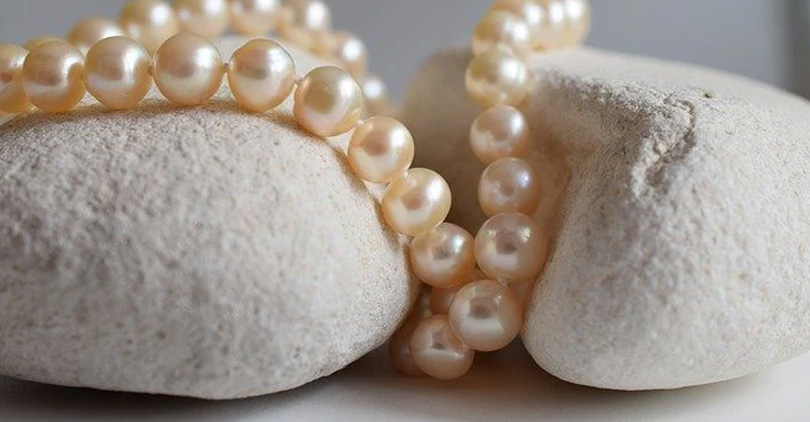
The enduring allure of pearls lies in their ability to add grace and refinement to any outfit. No matter whether it is a timeless heirloom necklace or a contemporary piece blending chunky chains with baroque gems.
But alongside beauty, a perennial question remains: how can you tell if pearls are real? Authenticity matters not just because faux copies command decidedly lower prices. There's also the integrity of your personal jewelry collection to consider.
Maybe you're building up investment pieces for offspring and love classic items regardless of their worth. Or you can simply enjoy pretty things that make you feel good. In any case, knowledge is power.
This guide explains foolproof methods on how to tell if pearls are real without damaging them. We'll help you verify whether those treasures passed down through generations (or snapped up last week) are authentic… or not!
Visual and Tactile Tests
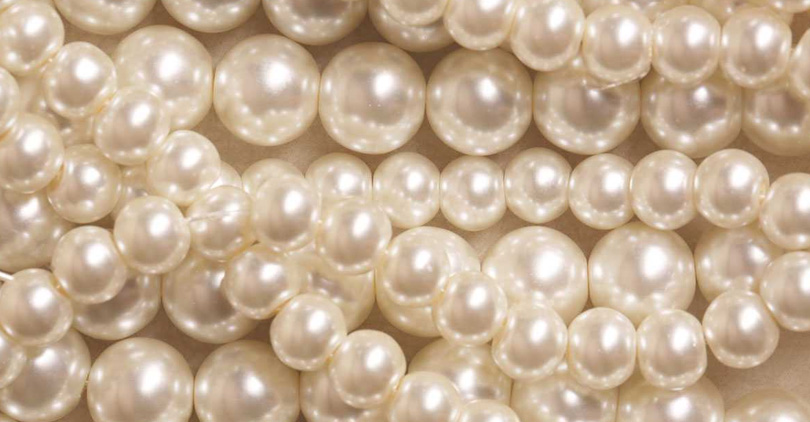
If you want to spot genuine pearls, there's nothing better than using your eyes and hands. These techniques are easy to learn but still very effective.
You don't need any special equipment. Just a little bit of knowledge plus your fingers and eyes will do! Let us take a closer look at some methods together:
The Luster Test
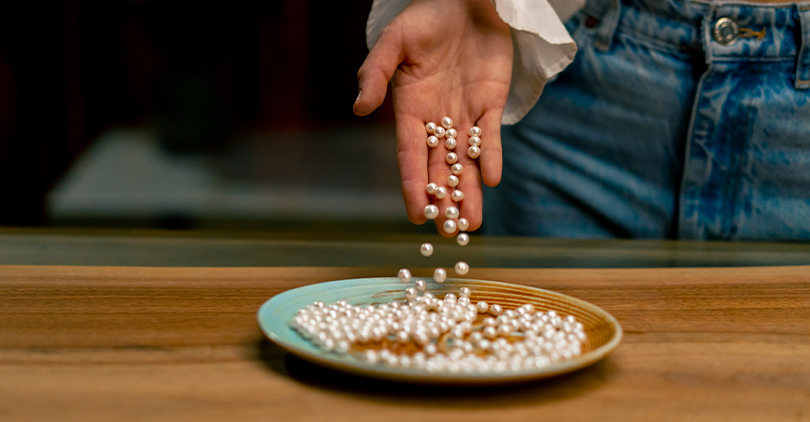
Luster is a major giveaway when it comes to determining whether a pearl is real or fake. Real pearls have an inner glow that seems to emanate from deep within the gem itself. It seems that isn't just on its surface.
This effect, called orient, causes colors to shimmer and dance as light reflects off the layers of the nacre comprising the pearl. When you hold it up to light, there should be subtle iridescence. It is a rainbow of hues that appears almost three-dimensional.
Imitation pearls—especially those made with glass or plastic—tend toward a more obvious shine. They may look glossy but lack depth in their luster.
Fakes often reflect light back at you in one even swath. They can seem too perfectly shiny—or even plasticky and cheap-looking! Hold them next to real ones, and they might (if they could!) say, "I know: me neither."
The Surface Test
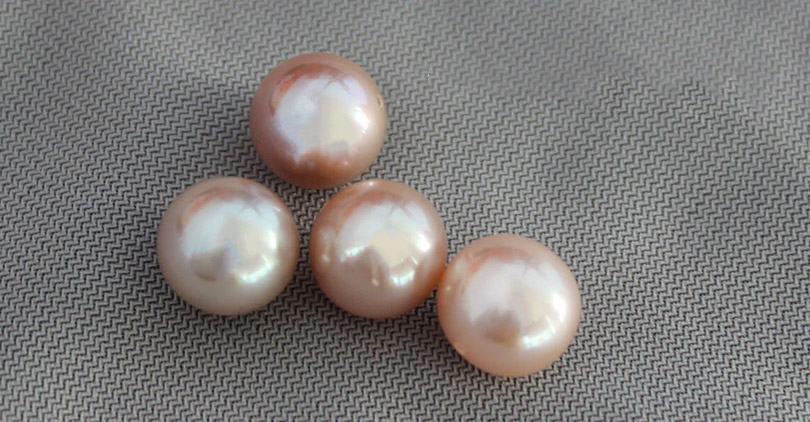
No two real pearls are exactly alike, and this is because of their surfaces. Genuine pearls regularly have little blemishes like minor pits, edges, or spots.
These flaws address their natural birthplaces as they develop layer by layer inside a mollusk. On close assessment of a genuine pearl, you may see these minor defects. It is evidence that you have a unique gem.
If the surface of a pearl seems too perfect and flawless, it could indicate that it is fake. Perfect pearls do exist; however, they're extremely rare – and expensive.
Most counterfeit pearls are made to look perfect. They have smooth and unblemished surfaces – attractive to the eye yet not normal for natural pearls. If your pearl looks so great that it might be bogus, then it presumably is.
The Weight Test

The weight test is another helpful examination. Because real pearls are made up of layers of nacre, they are denser than imitation pearls and, therefore, feel heavier when held.
To do the weight test, compare the weight of a pearl you know to be real and the same size as the one you're unsure about with that suspect pearl. If it feels significantly lighter in your hand, chances are high that it's a fake.
Alternatively, hold the pearl between your thumb and index finger and drop it into your other hand. Imitation ones may fall, feeling insubstantial or unnaturally light. Genuine pearls will drop with just perceptible weight behind them.
The Tooth Test
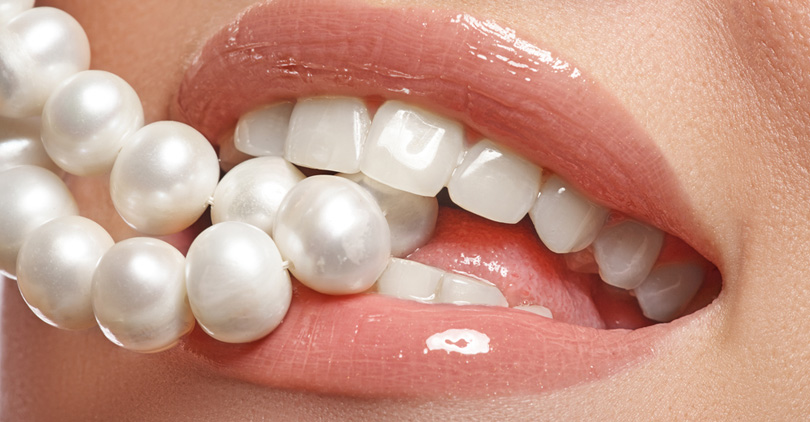
If you want to know whether a pearl is real without anyone noticing what you're doing, try the tooth test – it's that easy. First, make sure your front teeth are clean. Then, gently rub the pearl against them.
You should feel a slightly gritty or rough texture. This indicates the surface ridges (too tiny to see), which form naturally as layer upon layer of nacre builds up. They give pearls their luster.
Glass beads or plastic imitations, however, will seem unnaturally smooth when rubbed on the tooth enamel. They have no true nacre coating.
It's an interesting test and worth trying if you don't mind holding a piece of jewelry briefly in your mouth. But take care not to scratch or damage any tooth surfaces while experimenting!
Detailed Inspection Techniques
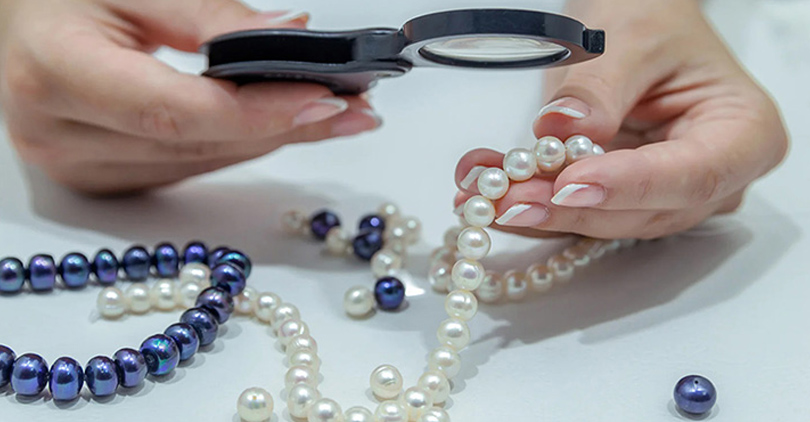
In order to detect real pearls, it is necessary to carry out a thorough examination with special methods. These techniques take more time. But they enable you to differentiate between genuine pearls and fake ones with certainty.
Drill Hole Examination
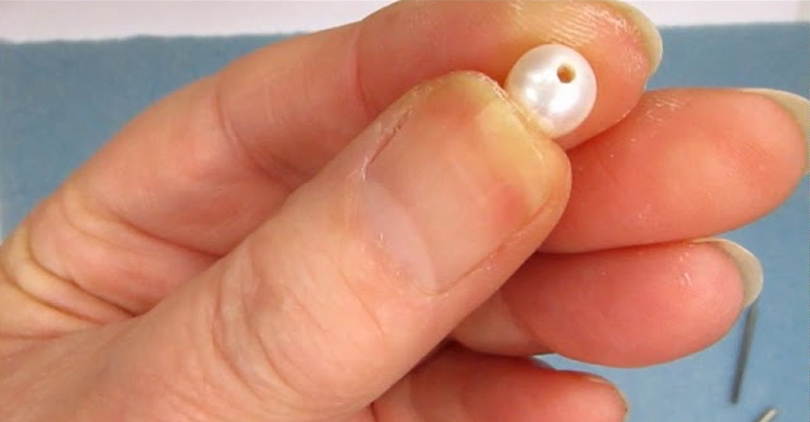
If you are looking at a pearl and want to know if it is genuine, one thing to check is the drill hole. Real pearls will have thin layers of nacre visible when you inspect this area closely.
These layers develop naturally over time and give the pearl its luster and depth. So if they are present, chances are you're holding real ones.
Fake pearls, however, often consist of a bead core coated with nacre or another substance. In these instances, checking the drill hole might reveal an abrupt change from coating to core material. It could look like a sharp-edged ridge or even just noticeably different textures meeting up.
Temperature Test

Real pearls will exhibit a specific reaction when exposed to heat. If you hold a real pearl against your skin, it should initially feel cool.
However, it will slowly warm up as it absorbs warmth from your body. This phenomenon is caused by the composition of the pearl's nacre layers. They possess special heat retention and release properties.
Conversely, imitation pearls often have a room temperature. They don't impart any impression of coolness akin to genuine ones. Additionally, faux pearls may not undergo the same degree of natural warming as real pearls do.
Magnification Test
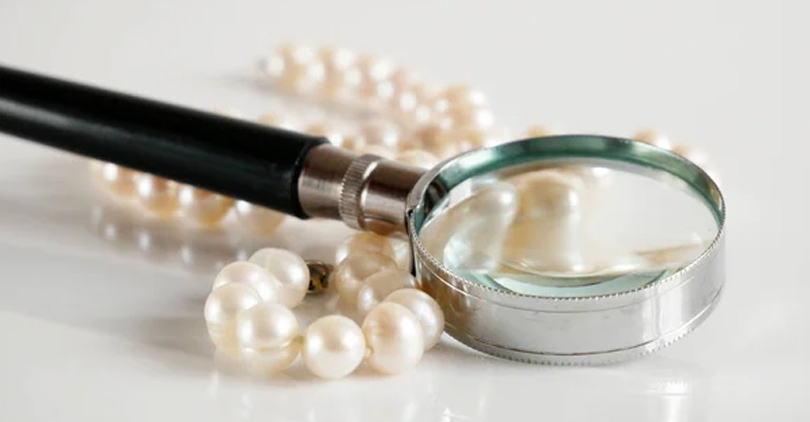
If you want to examine a pearl's surface closely, use a magnifying glass. Real pearls usually have an understated pattern or texture on their surface, known as either an orient or nacre structure. This is because of how they're made.
Fake pearls may have a surface that is too smooth and regular when viewed under magnification. They lack these natural patterns. This test doesn't stand alone. But it does add another layer of knowledge about whether your pearl is real or not.
Professional Verification
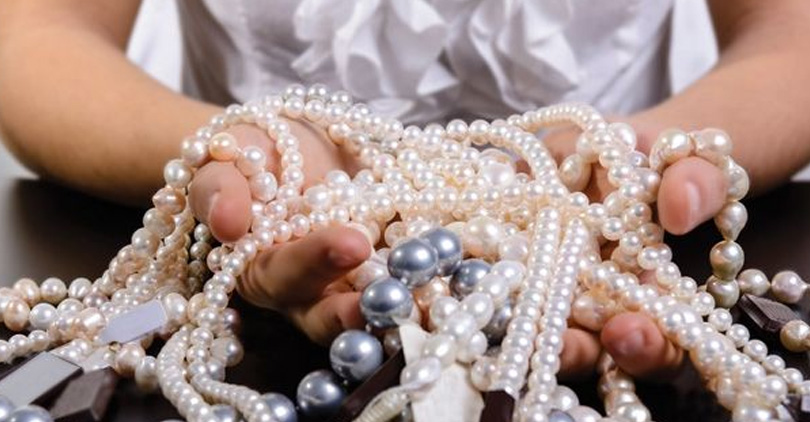
While DIY tests can be revealing, it's best to consult professionals for valuable pearls or collections. Knowing when to seek expert appraisal is crucial.
For instance, you've inherited a pearl necklace. Or you are considering a significant investment in pearls. This way, a professional appraisal can provide peace of mind.
Professionals have specific tools and knowledge. They can accurately assess value and authenticity, picking up nuances missed by home tests. Equally important is choosing a reputable appraiser. Look for someone with strong gemology credentials and a good reputation.
For example, consider a certified appraiser from a respected organization. These include the Gemological Institute of America (GIA). A trustworthy appraiser will issue you with a detailed report. It will give you confidence in the authenticity and value of your pearls.
The Value of Real Pearls
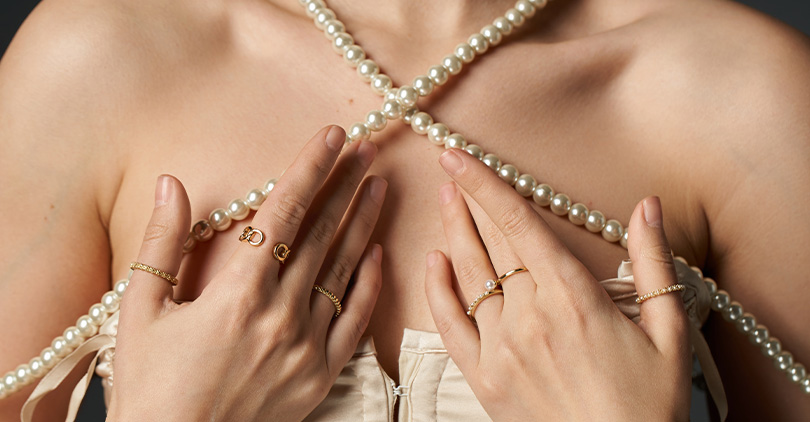
Real pearls are more than just beautiful jewelry. They're an investment worth making. Here's why authentic pearls are worth every cent:
● Investment Potential: If you own real pearls, there's a chance their value will increase as years go by. Particularly if they're considered rare or high-end. These beauties never go out of style and can be worn for generations. So, they're a good investment piece too!
● Durability and Longevity: Genuine pearls, especially ones that have a lot of nacre (the iridescent outer part), are very tough. If you take care of them, they can last for generations and still look good.
● Superior Quality: Fine craftsmanship guarantees their top-tier quality. You can feel how smooth and heavy they are compared to imitation pearls.
● Exceptional Luster: Real pearls outshine fake ones. There's a brightness and depth to them that imitation pearls don't have. That is why genuine pearl jewelry always looks so luxurious.
● Aesthetic Beauty: Real pearls are not only valuable but also incredibly beautiful. Their natural splendor, distinct shapes, and vibrant luster make them suitable for any event. They're both adaptable and classy!
Common Types of Fake Pearls
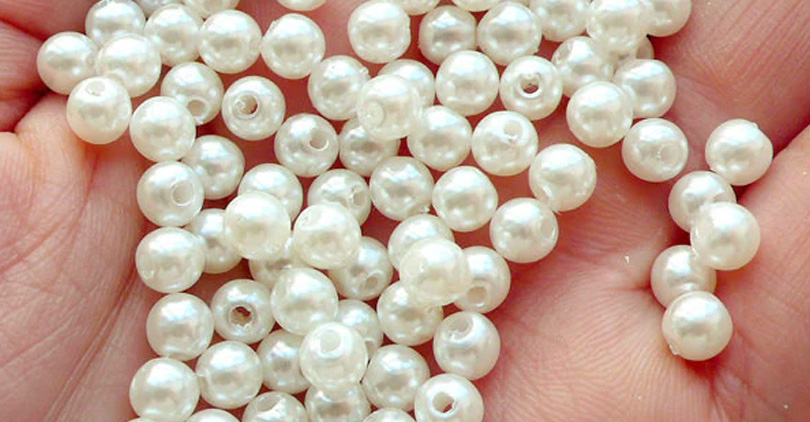
While there are countless imitations available, few things possess the appeal of genuine pearls. However, all pearls are not created equal. Understanding what makes a pearl fake versus real can help you find real gems among endless look-alikes.
Glass Pearls
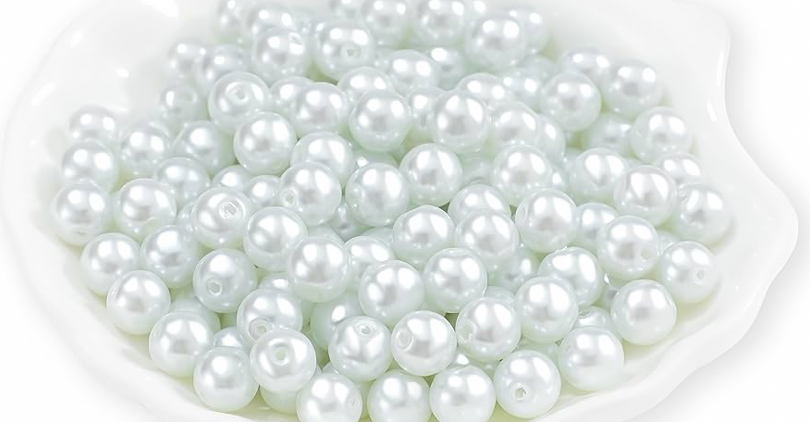
Glass pearls are a popular imitation pearl. To create them, artisans coat glass beads with a material that mimics the iridescence found on natural pearls.
Although they can be quite lovely, these pearls frequently don't possess the same warmth or depth as real ones. They may seem overly shiny and lack any blemishes or imperfections.
Another downside is that the coating sometimes chips or flakes off. It happens especially around the holes where they've been strung, revealing the glass beneath. This fragility factor is significant. It means such pearls won't necessarily wear well over time—or possibly even last as long as you'd like them to!
Plastic Pearls
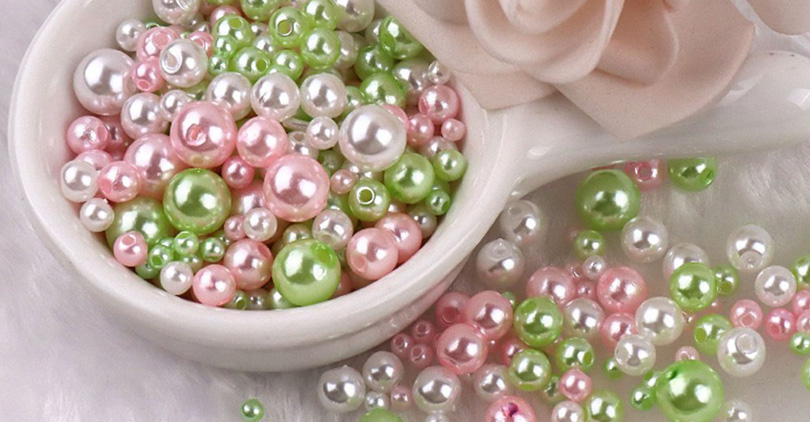
Plastic imitations are well-liked, too, particularly in costume jewelry. You can tell these by their weight. They feel almost insubstantial compared to real pearls when you hold them.
They also don't have the same luster as natural pearls. Instead of being slightly translucent, many may appear more opaque. So they do not glow in the same way when light passes through them.
If you examine a plastic pearl closely, you might notice its surface lacks texture. It will be a less convincing close-up than an imitation made from glass or shell, for example.
Equally, if it feels unnaturally light when you pick it up or looks overly glossy (rather than having luster), there's a good chance it's made from plastic.
Shell Pearls
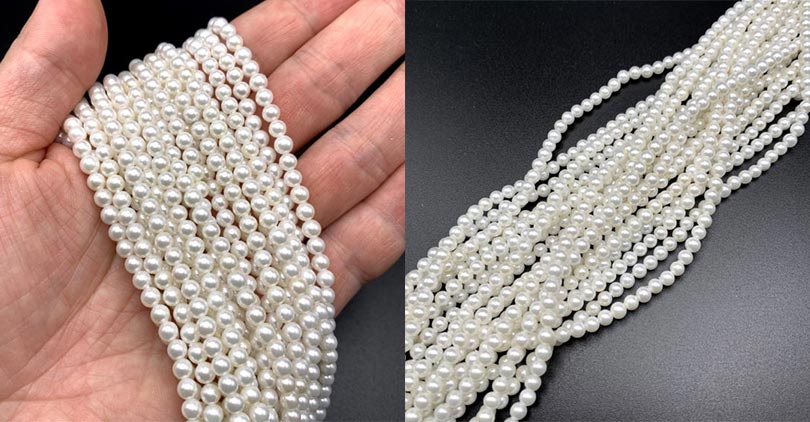
Shell pearls are an excellent imitation of pearls. They are made from the inner lining of oyster shells. To create shell pearls, ground shell powder is formed into beads or spheres and coated for luster. It gives them weight and feels akin to real pearls.
However, there are minute distinctions: Their shine doesn't possess the iridescence known as orient. Instead, it has a lovely glow.
Moreover, shell pearls may appear too perfect. Unlike natural ones, each tends to be exactly spherical and identical in color to the next.
Conclusion
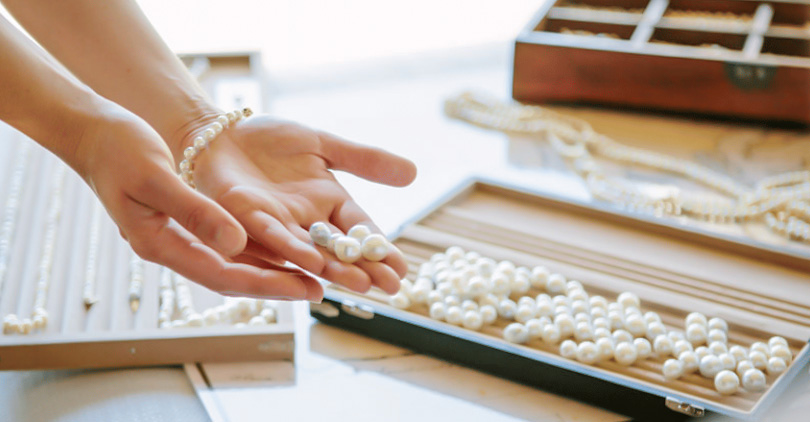
To determine if pearls are real, we've looked at their appearance and feel, examined them closely, and learned about fakes. Genuine pearls are valuable for their beauty and durability. Plus, they can be a worthwhile investment.
Check them yourself or get an expert to do so before buying. This way, you're making sure you spend your money wisely on something that should last forever.
After all, there's nothing quite like real pearls. Trust what you know when you're deciding whether to buy them or not. And enjoy wearing your fabulous find!


Leave a Comment